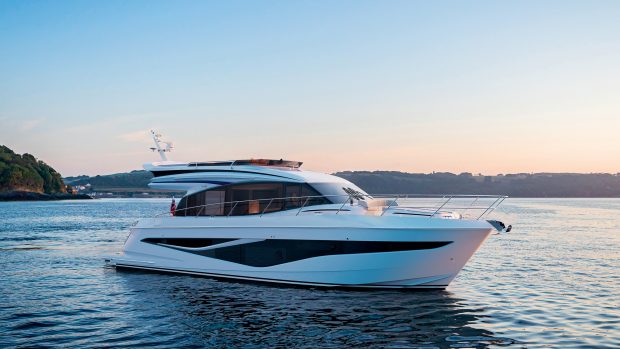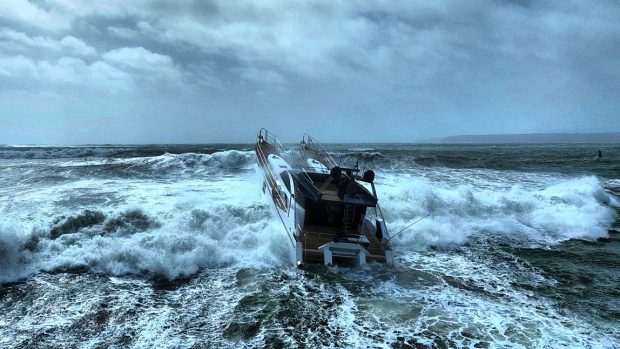Danish start-up company Dacoma is experimenting with a new type of patented stabiliser system – the Airkeel.
The concept is broadly similar to the sort of canting keels used by high-performance sailboats, but instead of delivering lateral resistance and a downward force from a weighted bulb keel, it uses a hollow air-filled bulb to create a buoyant upward force.
An active control system swings the keel from side to side to counteract the angle of lean and adjusts its buoyancy by blowing compressed air into the bulb to alter the water level inside it.
Not only does this enable the Airkeel to stabilise the boat underway and at rest but it is also claimed to increase the buoyancy of boats in the 23-49ft category by up to 15%.
Whereas most fin stabilisers tend to increase fuel consumption by a few percentage points due to the extra drag, the Airkeel actually reduces it, according to its inventor Arnd Baurichter.
That’s because while it still contributes appendage drag, the extra buoyancy effectively lightens the load state and forces the boat to ride higher in the water.
“Interest in what we are doing is especially high from the offshore energy sector, which is principally concerned with safe, efficient and reliable transfer of crew to various types of platforms,” he says.
“But down the line there should be considerable interest from the leisure boat and superyacht sectors too, and not just for tenders. I can see these systems helping yachts displacing up to 100 tonnes or even larger.”
A 7m ProZero RIB that has been retrofitted with an experimental Airkeel installation has just launched at Danish workboat builder Tuco Marine.
“Thus far sea-trials have majored on stationary or slow-speed performance,” says the company’s Jonas Pedersen. “But our tests will soon move to the next phase – planing speeds.”

The extra buoyancy is claimed to reduce fuel consumption by raising the ride height






